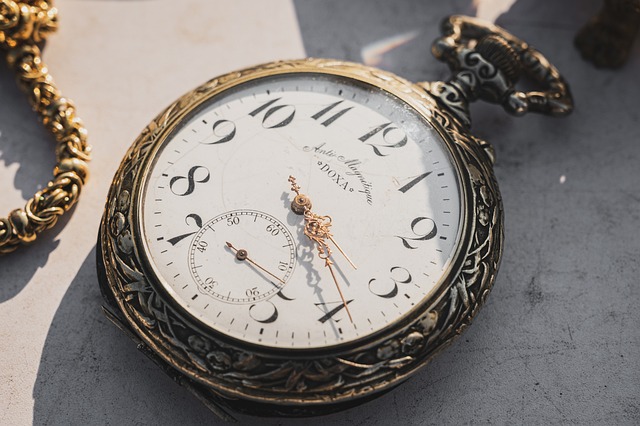Investors looking to incorporate precious metals like gold into their Individual Retirement Account (IRA) must understand the specific rules for self-directed IRAs that allow for such assets. These accounts require adherence to IRS purity standards for metals and utilization of approved storage facilities, along with engagement with reputable custodians and dealers. It's important to consider tax implications, potential fees, and the responsibilities of managing physical investments. Investors should consult with financial advisors to align these assets with their broader retirement strategy and risk profile. Transitioning from traditional or Roth IRAs to gold-backed IRAs involves transferring funds to a self-directed IRA and purchasing approved gold through a custodian, with a focus on maintaining the assets' tax-advantaged status. Precious metals eligible for IRA investment include gold, silver, platinum, and palladium in specific forms and purities. The process necessitates careful selection of a custodian and dealer, and ongoing communication to ensure compliance throughout the transaction. While gold can offer portfolio diversification, inflation protection, and stability as a tangible asset, investors must weigh these benefits against potential volatility and costs. It's essential to seek professional advice to navigate the complexities and legal requirements of investing in precious metals within an IRA framework.
Investors seeking to fortify their retirement nest egg against economic turbulence may find solace in the time-honored tradition of gold. This article illuminates the pathway of transforming a traditional or Roth IRA into a retirement vessel of luster—gold. By detailing the conversion process, eligibility criteria, and the precious metals eligible for holding within a self-directed IRA, readers will gain insight into diversifying their retirement portfolio with a tangible asset that has stood the test of time. We’ll navigate the steps to effectuate this change, weigh the attendant risks and rewards, and consider the tax implications. Join us as we explore how gold within an IRA can serve as a shield against inflation and market swings, safeguarding your future with a golden chain.
- Understanding IRA to Gold Conversion
- Eligibility and Requirements for Conversion
- Types of Precious Metals Allowed in an IRA
- Steps to Convert IRA to Gold Investment
- Risks, Benefits, and Tax Considerations
Understanding IRA to Gold Conversion

Investors considering the conversion of their traditional or Roth IRA to include gold within their retirement portfolio should first comprehend the intricacies and rules governing such transactions. This process involves transferring accumulated funds into a self-directed IRA that permits investment in physical gold, silver, platinum, and palladium, as prescribed by the Internal Revenue Service (IRS). It’s crucial to work with reputable custodians and dealers who specialize in these types of investments to ensure compliance with regulatory standards. The IRS stipulates that the gold held within the IRA must be of a certain fineness, typically 99.5% purity for coins and bars, and must be stored in an IRS-approved depository. This conversion strategy can offer investors a unique opportunity to diversify their investments and potentially protect their savings against the devaluation of currency due to inflation or economic uncertainty. It’s important to conduct thorough research and consult with financial advisors to understand the tax implications, fees, and storage requirements associated with holding physical gold within an IRA framework. By doing so, investors can make informed decisions that align with their investment goals and risk tolerance for retirement savings.
Eligibility and Requirements for Conversion

Individuals interested in converting their traditional or Roth IRA to an IRA backed by gold must meet specific eligibility criteria and adhere to a set of requirements to ensure compliance with IRS regulations. Firstly, the account holder must possess a self-directed IRA that allows for the investment in physical precious metals. This type of IRA is distinct from traditional or Roth IRAs in that it permits assets other than stocks, bonds, and mutual funds. Prospective investors should choose a custodian that specializes in such alternative investments, as they will manage the transaction and ensure the gold meets the purity standards set by the IRS—typically 99.5% for gold coins and bullion.
Upon selecting a self-directed IRA custodian and an approved depository, account holders can initiate the conversion process. They must transfer funds from their existing IRA to the new self-directed IRA, after which the custodian will purchase the eligible gold or other precious metals on behalf of the IRA. It’s crucial to note that the IRS imposes limits on the amount one can contribute to an IRA each year, and these funds are the only ones permissible for conversion. Additionally, the physical gold must be stored in a facility approved by the IRS, maintaining its status as a retirement asset within the IRA framework. Proper documentation and adherence to transaction rules are essential throughout this process to avoid penalties or taxable events. Investors should consult with a financial advisor or tax professional well-versed in these types of transactions to navigate the conversion successfully and ensure compliance with all applicable laws and regulations.
Types of Precious Metals Allowed in an IRA

Investors interested in diversifying their retirement savings within a self-directed IRA by investing in precious metals have a range of options. The Internal Revenue Service (IRS) stipulates that for IRA purposes, acceptable precious metals include gold, silver, platinum, and palladium in the form of bars or coins that meet certain fineness or purity criteria. Gold must be at least 99.5% pure, while silver should be 99.9% pure. For platinum and palladium, a minimum fineness of 99.95% and 99%, respectively, is required.
Coins are a popular choice for IRA investments, with examples like American Gold Eagles, Canadian Gold Maple Leafs, Austrian Gold Philharmonics, and South African Krugerrands being commonly accepted. Bullion bars also qualify, provided they are manufactured by a reputable refiner or mint and bear an assay office stamp or hallmark indicating their purity and weight. Investors must ensure that the precious metals held within an IRA are held in custody by an IRS-approved depository or a trustee that can facilitate the transaction while adhering to IRS rules and regulations. This ensures that the investment remains within the tax-advantaged framework of the IRA, allowing for potential inflation protection and a balanced retirement portfolio.
Steps to Convert IRA to Gold Investment

To initiate the process of converting a traditional or Roth IRA to gold, investors must first select a trustee-approved self-directed IRA custodian that permits investments in precious metals. This custodian will manage the account and ensure compliance with IRS regulations. Once a reputable custodian is chosen, investors should request an application kit and complete the necessary forms to establish the new self-directed IRA. It’s imperative to carefully review the custodian’s fee structure and understand all associated costs.
After establishing the self-directed IRA, the next step involves identifying a precious metals dealer that is IRS-approved and has a proven track record of handling such transactions. The dealer must ship the gold directly to the custodian’s approved depository on behalf of the IRA, not to the investor personally. The IRS stipulates specific purity and type requirements for IRA-eligible gold, so investors must ensure that their chosen precious metals meet these standards. Once the gold arrives at the depository and is verified for compliance with IRS rules, it becomes a part of the investor’s IRA, providing a tangible asset component to their retirement portfolio and offering potential protection against inflation and market downturns. Investors should maintain close communication with both their custodian and dealer throughout this process to ensure a smooth and compliant transaction.
Risks, Benefits, and Tax Considerations

Investors considering the conversion of a traditional or Roth IRA to include physical gold within their retirement portfolios should be aware of both the potential benefits and the associated risks. One significant benefit is diversification, which can protect against market volatility and inflation. Gold has historically served as a hedge against economic uncertainty, potentially preserving wealth over time when traditional investments may falter. Additionally, for those with a long-term investment horizon, gold can offer stability and a tangible asset that is not subject to the same market forces as stocks or bonds.
However, this strategy also comes with inherent risks. The price of gold can be highly volatile in the short term, and its value may not always correlate with the performance of other assets in a portfolio. Storage and insurance costs for physical gold are factors that need careful consideration, as are the transaction fees associated with purchasing and periodically updating the IRA holdings. Furthermore, tax considerations are critical; distributions from a Roth IRA are generally tax-free, but early withdrawals from a traditional IRA may be subject to taxes and penalties. Conversely, when an investor reaches the age of required minimum distribution (RMD), the tax treatment of their gold holdings within the IRA will depend on the type of IRA they have. It is imperative to consult with a tax advisor or financial professional to fully understand the tax implications and to ensure compliance with IRS rules regarding IRA investments in precious metals.
Investing in gold within a self-directed IRA can serve as a strategic addition to one’s retirement portfolio, offering both diversification and a potential hedge against inflation and market fluctuations. By understanding the eligibility criteria, the types of precious metals permissible, and the steps involved in the conversion process, individuals can make informed decisions that align with their financial goals and risk tolerance. It is crucial to weigh the benefits and risks, as well as consider the tax implications associated with such investments. Prospective investors should thoroughly review the guidance provided and consult with financial experts before proceeding with an IRA-to-gold conversion to ensure it suits their retirement planning objectives.
